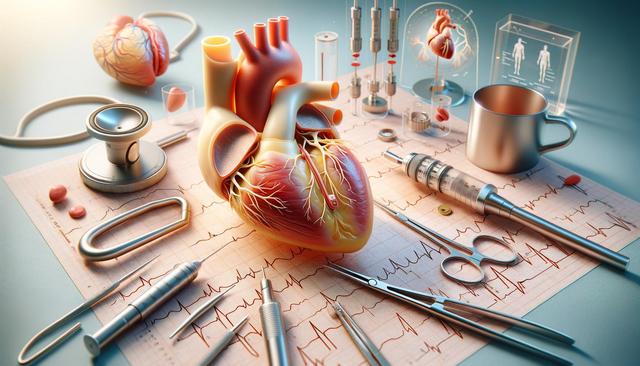What Is Aortic Valve Replacement and Why Is It Needed?
The aortic valve plays a central role in the heart’s function, allowing blood to flow from the heart into the aorta and onward to the rest of the body. When this valve becomes damaged—due to age, infection, or congenital conditions—it may not open or close properly. This condition is known as aortic valve disease, and it can lead to symptoms like chest pain, fatigue, shortness of breath, or even heart failure. Aortic valve replacement surgery is a medical procedure that involves removing the faulty aortic valve and replacing it with a new one to restore proper blood flow.
There are two primary types of valves used in replacement surgeries:
- Mechanical valves – made from long-lasting materials, often chosen for younger patients.
- Biological valves – made from animal or donated human tissue, often used for older patients or those who can’t take blood-thinning medications long-term.
The decision on which valve to use depends on several factors, including age, lifestyle, and overall health condition. Consulting with a heart specialist is essential to determine the most suitable option for each individual.
Types of Aortic Valve Replacement Procedures
There are different surgical methods available for aortic valve replacement, each suited to specific patient needs. The main procedures include:
- Open-heart surgery: The traditional method involving a large incision in the chest.
- Minimally invasive surgery: Uses smaller incisions and may result in faster recovery.
- Transcatheter Aortic Valve Replacement (TAVR): A non-surgical option where a new valve is inserted via a catheter, often used in high-risk patients who cannot undergo traditional surgery.
Each technique has its benefits and limitations. TAVR, for instance, is less invasive and typically involves shorter hospital stays, but it may not be suitable for everyone. On the other hand, open-heart surgery offers a broader range of valve choices but requires a longer recovery period. Medical teams will recommend the most appropriate method based on factors like the patient’s age, severity of the valve damage, and overall health condition.
Preparing for Aortic Valve Replacement Surgery
Preparation for aortic valve replacement involves a series of medical evaluations and planning steps to ensure a safe and successful procedure. Patients typically undergo:
- Blood tests and imaging scans (e.g., echocardiogram, chest X-ray)
- Electrocardiogram (ECG) to check heart rhythm
- Consultations with surgeons, anesthesiologists, and cardiologists
In addition, patients are advised to:
- Stop smoking if applicable
- Adjust medications as instructed by the doctor
- Arrange for post-surgery care and transportation
Being well-prepared can help reduce anxiety and increase the chances of a smooth recovery. The care team will also guide patients on what to expect during and after the surgery, including possible risks and recovery timelines.
Recovery and Aftercare Following Surgery
Recovery after aortic valve replacement varies depending on the type of procedure performed and the individual’s overall health. Generally, patients stay in the hospital for 5 to 10 days after an open-heart procedure, while TAVR patients may go home in as little as 1 to 3 days.
Key aspects of recovery include:
- Regular monitoring of heart function and incision sites
- Gradual return to physical activity, guided by a rehabilitation program
- Medication management to prevent blood clots and infection
- Follow-up appointments with the cardiologist
Cardiac rehabilitation programs are often recommended to help patients regain strength and confidence. These programs include supervised exercise, lifestyle education, and emotional support, all of which contribute to a smoother transition back to normal life.
Long-Term Outlook and Lifestyle Adjustments
For many patients, aortic valve replacement leads to a significant improvement in quality of life. Symptoms like fatigue and breathlessness often diminish, allowing individuals to return to daily activities with greater ease. However, maintaining heart health after surgery involves ongoing care.
Long-term considerations include:
- Regular heart check-ups to monitor valve function
- Sticking to prescribed medications and dietary recommendations
- Staying active with physician-approved exercise
- Monitoring for signs of complications, such as infection or irregular heartbeats
Patients with mechanical valves may need lifelong blood thinners, while those with biological valves might require another replacement in the future. Staying informed and engaging proactively with healthcare providers helps ensure continued well-being and early detection of any issues.
Conclusion: Regaining Strength with Confidence
Aortic valve replacement surgery offers a renewed chance at a healthier life for those with severe valve issues. Whether through traditional open-heart surgery or less invasive methods like TAVR, the goal remains the same—to restore proper heart function and improve overall well-being. With dedicated aftercare, lifestyle adjustments, and regular follow-up, most patients experience meaningful recovery and can enjoy a more active, fulfilling life. If you or a loved one is considering this procedure, discussing all available options with a trusted healthcare provider is the first step toward making an informed and confident decision.


